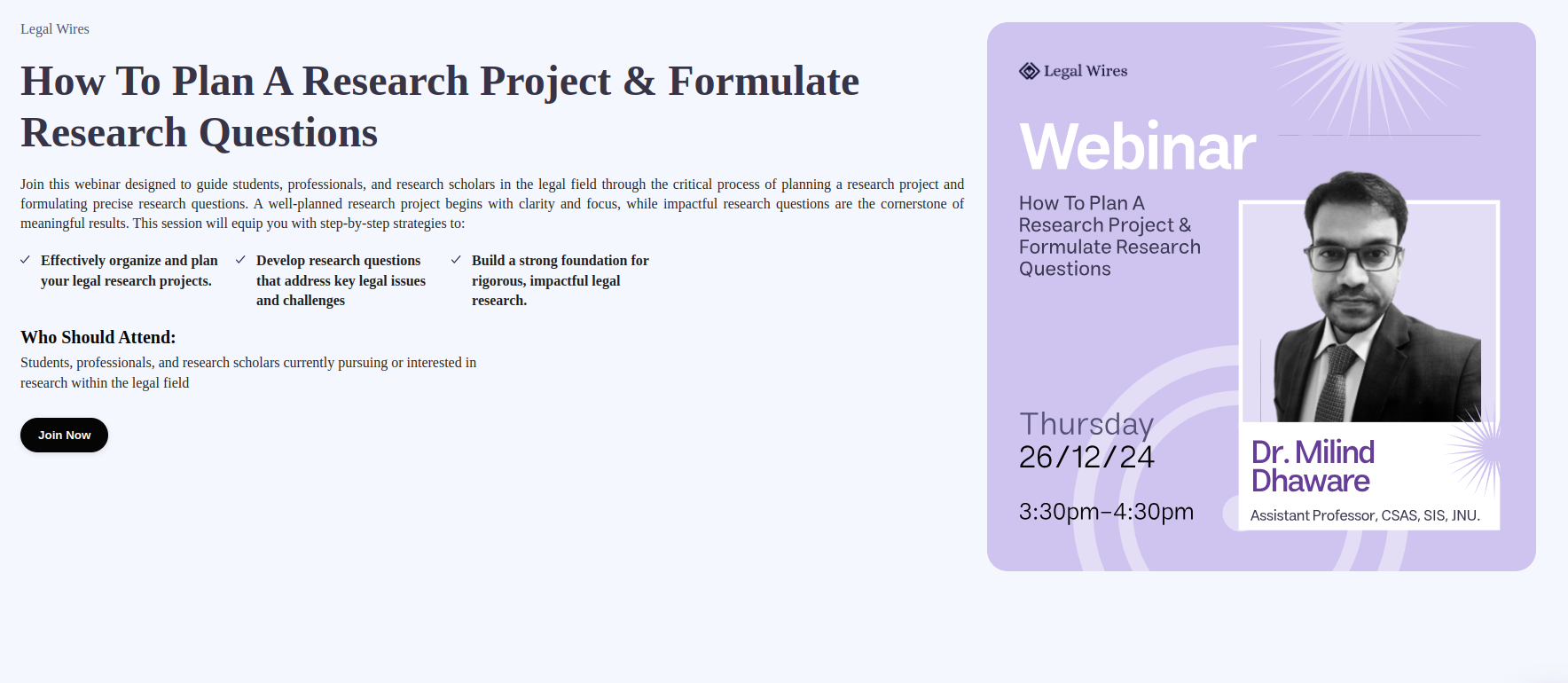Formulating a research problem involves identifying a specific issue, analyzing gaps in knowledge, and defining objectives. A good research problem is clear, researchable, significant, and feasible, serving as the foundation for systematic inquiry.


Join the webinar related to this article starts on 26-12-2024,15:30 ends on 26-12-2024,16:30
Introduction
The term problem is derived from the Greek word Proballein which means question proposed to a person or organization to answer. A topic for research is a specific and well-defined issue that a researcher wishes to examine, investigate, or resolve through systematic study. It serves as the central focus of the entire research project. The research problem guides hypothesis formation, technique selection, variable identification, and data analysis. In essence, a research problem defines the scope and objective of the investigation. It highlights the gaps in existing knowledge and explains why the study is important.
The terms ‘identification of problem’, ‘formulation of problem’, and ‘solving of problem’ have different meanings in every sense. The first step in conducting research is to identify the problem. Following problem identification, the researcher starts analyzing information to propose a solution to the specified problem. According to Metron, research problems are often more difficult to find and to formulate a problem than to solve it. Research generally begins with an idea, a query, or a continuation of a prior line of inquiry. Methodology, or problem solving, is fundamentally a thought process.
Identification of a Research Problem
The first step in conducting research is to identify the research problem. Identification of a suitable research problem is not as simple as it appears. This is a challenging and time-consuming task. The success of research is dependent on the suitable problem selection. A wrong identification may negate the goal of the research and cause complications later on. Identifying a research problem is an important task for a researcher because not every topic is researchable, and not all researchable problems are appropriate for all research. For example, a social problem may be relevant to social research but not to legal research, but it can be considered with some alterations.
Problem solving begins at the level of fundamental process thinking, which can be preverbal or in the form of stack up, the simple and naive use of an interrogative pronoun such as 'why' and 'how' directed at a specific focus of experience. Secondary process thinking may only occur after sensations have been reduced to percepts, which are then reduced to concepts[1].
Selection of Research Problem
Not every identified problem becomes a research challenge since not every research is researchable. Consequently, choosing a research topic is an important issue. The goal of the research determines which problem is chosen. Research might be done for practical reasons or to give a degree. Choosing a topic that is realistic, relevant, and valuable while also providing the researcher with vital material is a highly challenging task.
A researcher should consider the following things while selecting any research problem:
- He should choose the problem based on his own experience.
- The researcher ought to choose a problem that interests him.
- Because legal research has been dominated by doctrinal research, the chosen research problem should be empirical.
- The topic falls within the researcher's economic capacity and academic capabilities.
- The issue being studied should be novel and significant.
- Relevant data collection tools are available.
- Availability of time.
- The budget for the research problem should be reasonable.
- There should be availability and adequacy of sample data for the research problem.
Components of Research Problem
There are five components[2] of a research problem. They are as follows:
- There must be an individual or a group which has some difficulty or problem.
- There must be some objectives to be attained. If one wants nothing, one cannot have a problem.
- There must be alternative means or course of action for obtaining the objectives one wishes to attain. This means that there must be two means available for the researcher, for if he has no choice of means, he cannot have a problem.
- There must be some environment to which the difficulty pertains.
- There must remain some doubt in the mind of researchers with regard to the selection of the alternatives. This means that the researcher must answer the questions concerning the relative efficiency of the possible alternatives.
Formulation of Problem
After selecting a problem, it should be carefully defined. The goal of problem formulation is to identify and isolate a specific problem for future research. Before beginning active study planning, the researcher needs to first formulate the problem. Formulation includes definition, assertion, and classification.
The formulation of a problem involves two steps. They use inductive and deductive reasoning. The deductive method requires previous assumptions, which are verified by the researcher using study design, sample, and tools. In the inductive approach, the researcher first investigates the empirical world or study topic. He draws on field experience to conduct this research. This analysis is based on information he obtained himself. The development of a research problem begins with thinking, and scientific research can think in an inductive or deductive fashion. It begins with facts and returns to facts to verify its hypothesis. It is based on factual evidence and demonstrates a cause-effect link. Induction moves forward from particular to the general while Deduction is backward movement from general to particular[3].
Features of a good Research Problem
A well-formulated research problem has several crucial features:
- Clarity: The problem should be apparent and understandable to those in the field.
- Specificity: The problem should be limited enough to be addressed within the study's restrictions while remaining wide enough to yield relevant results.
- Researchability: The problem should be researchable utilizing existing methodologies and data.
- Significance: The problem should help to advance knowledge, solve a practical problem, or address an unanswered question in the field.
- Feasibility: The problem should be solvable within the researcher's resources, abilities, and timeline.
- Novelty: Ideally, the research problem should address a gap in the existing literature or present a novel perspective on an existing issue.
Common mistakes in formulating a Research Problem
- Overly Broad Problems: An overly broad problem can result in an unmanageable or unfocused study.
- Vague or Ambiguous Problems: A poorly defined problem might disrupt the research process and result in inconclusive or unreliable results.
- Lack of Originality: Choosing a well-studied problem without providing a novel perspective can restrict the research's impact.
- Infeasible Problems: A research challenge that is not viable to solve owing to resource, time, or data constraints will most likely fail.
Conclusion
Formulating a research problem is an important first stage in the research process. A well-defined problem clarifies the study's focus, leads the technique, and assures that the research fills an important knowledge gap. Researchers can lay a solid basis for their work by going through an organized process that includes identifying a broad area of interest, completing a literature review, limiting the topic, defining the problem, creating research questions or hypotheses, and assessing feasibility. A good research problem is obvious, particular, researchable, and substantial, and it paves the way for important contributions to the area.
Join the webinar related to this article starts on 26-12-2024,15:30 ends on 26-12-2024,16:30
[1] Prof. Mona Purohit, Legal Education and Research Methodology 179 (Central Law Publication, Prayagraj, 4th edn., 2024).
[2] Ibid.
[3] Y.K Singh and R.B.Bajpai, Research Methodolgy Techniques and Trends, 305.


